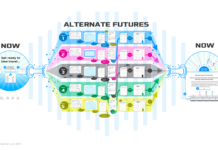Turning things around when everything sucks at work
Some tips to get overcome barriers and get things back on track
Photo by Jackson Simmer on UnsplashSometimes at work, the same issues can crop up so many times we start to think that things will never change, which makes us tired and resentful. Getting to that point is dangerous — we become negative..
Understanding data feminism
A new way of thinking about data science and data ethics, informed by the ideas of intersectional feminism.by Catherine D’Ignazio and Lauren F. Klein
Introduction: We wrote this book because we are data scientists and data feminists. Although we speak as a “we” in this book, and share certain identi..
Designers: mind your language
I sometimes wonder how the design community — a group of people who pride themselves on their empathy and ability to communicate clearly — have been able to create such an unapproachable profession. For outsiders, the litany of buzzwords, methodologies, and rules can at best confuse newcomers, and a..
Future Scouting#1 — Designing a speculative design game
Gamifying an introduction to speculative and values-driven design
Continue reading on UX Collective »
Do I know enough about the problem to prescribe a solution?
The prescription vs. the platform approach.Picture Jon. Jon is a first adopter (early consumer) of a startup that’s trying to design a better way to roast salmon using a toaster oven. He’s smart, 35, and a working professional. He spends his evenings answering work emails and watching Dora the Explo..
How to build tech that does things differently
Data ethics principles and processes are useful, but they are often of limited use when it comes to addressing the social and environmental harms of the data economy. This post is about using creative R&D to build data technologies that embed a different set of values from the ground up, balancing e..
Have we been building products all wrong?
Are opinionated products necessary for differentiation in a competitive market? Or do they impose undue limitations?
Continue reading on UX Collective »
The principles of sensory design
Sight isn’t the only way to experience the world: Senses work in tandem to guide cognition, movement, and communication. Experts posit that humans possess between 9 and 33 distinct senses, yet digital design routinely ignores neurological factors beyond sight. Sensory design principles emphasize the..
How taxonomies in the physical world can inform design decisions
Taxonomy, as it relates to user experience and information architecture, refers to the structural methods for how information is sorted, classified and organized.
“To effectively arrange anything, we have to choose methods for organizing and classifying content in ways that convey the intended infor..
A guide to statistics in UX: When qualitative research isn’t enough
Qualitative methods aren’t always the right methods. Sometimes we need to step back and take a different perspective to understand the…
Continue reading on UX Collective »










